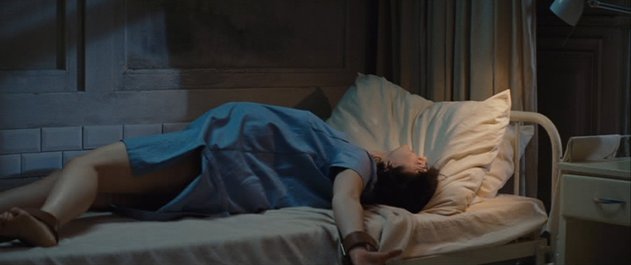 Biutiful is a tale about Uxbal, a middle-aged man who is suffering from prostate cancer which becomes terminal during the course of the movie. In a struggle to save money in order to pay the rent and be able to leave money to care for his children financially after his death, he engages in a number of dodgy enterprises, including but not limited to drug dealing (in addition to using) and brokering the cheap labor of smuggled Chinese immigrants. It is later on, as the end becomes nearer, that he tries to repair his karma by confronting the snakeheads and trying to right this and some of the other wrongs he has commited in his life. When a Senegalese associate dies, he takes in his wife and child (and later ends up telling the wife to take care of his kids and handle the money). Uxbal remains physically active until near the end of his life, though he periodically enters the hospital for chemotherapy and other treatments. He is walking till the very end, though the toll the cancer takes is shown in scenes where he urinates blood, and walks home from a chemotherapy session whereupon he upchucks on the street. Near the end of the movie, he is shown wearing an adult diaper, which symbolizes the fact that the cancer is affecting him more physically, but he is keeping his suffering to himself.
Biutiful is a tale about Uxbal, a middle-aged man who is suffering from prostate cancer which becomes terminal during the course of the movie. In a struggle to save money in order to pay the rent and be able to leave money to care for his children financially after his death, he engages in a number of dodgy enterprises, including but not limited to drug dealing (in addition to using) and brokering the cheap labor of smuggled Chinese immigrants. It is later on, as the end becomes nearer, that he tries to repair his karma by confronting the snakeheads and trying to right this and some of the other wrongs he has commited in his life. When a Senegalese associate dies, he takes in his wife and child (and later ends up telling the wife to take care of his kids and handle the money). Uxbal remains physically active until near the end of his life, though he periodically enters the hospital for chemotherapy and other treatments. He is walking till the very end, though the toll the cancer takes is shown in scenes where he urinates blood, and walks home from a chemotherapy session whereupon he upchucks on the street. Near the end of the movie, he is shown wearing an adult diaper, which symbolizes the fact that the cancer is affecting him more physically, but he is keeping his suffering to himself.
Though he is far from an ideal parent to his two young children (the older of the two turns ten during the course of the picture), living in a shabby apartment and serving cold cereal piled high with sugar for dinner, he tries to be “present in his children’s lives” as he expresses it when he adds that his mother died when he was young, and he had never met his father. His grandfather had also been an absentee father.
While he is separated from the children’s mother Marambra, they do see and interact with one another on a regular basis. The children also spend some time visiting and, at times, temporarily living with, their mother, who initially seems to be the “more fit” parent, based on her more well-kept apartment and well-stocked refrigerator.
Marambra’s ability to be a properly functioning parent is negatively affected by her bipolar disorder. One one visit, Uxbal refers to her past alcohol abuse, and engages in some “checking up” on her. It is made clear that she has engaged in impulsive behavior in the past during manic states, and implied that she may be “self-medicating”. In one scene where she appears to be in a manic state, she is lively, gossiping, and amusing, as well as doting on the children. But on another occasion, she locks the little boy in the basement as a disciplinary measure. Somewhat later, it is made clear that the depressive phase of her condition is coming on. While I do not have any information about the state of affairs in Spain’s mental health system, Marambra makes reference to having previously gone to a “clinic” for her mental illness, where she was “tied up”. No psychiatric medications are seen or spoken of, and nor is electroshock.
Perhaps Marambra realizes she needs to regain her equilibrium for the sake of her children, because she goes to the clinic in spite of the deterrent of being restrained. Uxbal takes the children for the duration, and tells the children the truth, but he also tells them that while she needs to “rest” at the moment, they will be able to visit her later on “any time they want”. She is still in the clinic when Uxbal’s condition becomes worse and he dies.


